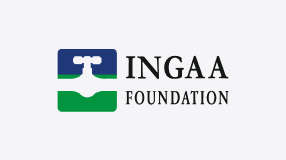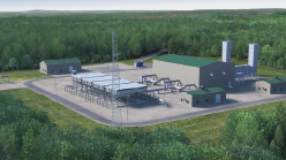Ronald L. Adams, Senior Vice President, Consolidated Natural Gas Company provided a program summary at the conclusion of the Summit that identified the critical issues facing the natural gas industry as it prepares for, and enters, the next century.
- When considering the issues, challenges and opportunities for enhancing the safety of pipeline operations, it is essential to understand that shareholder value will still be the primary driver of the industry. The successful companies will be the ones that can grow shareholder value, primarily by managing and controlling capital and operating costs.
– Within companies, value can be enhanced through partnerships with employees, not just to generate and reward good ideas, but to assure the sound implementation of good ideas regardless of the source.
– The return on safety spending can be leveraged through the sharing of good ideas and best practices.
- However, with regard to safety, the reality is that the industry cannot afford to have incidents. So, even if the total dollars traditionally spent on safety are reduced, safety must continually improve. This is the underlying safety challenge for the industry, and to meet it, the quality of safety must be decoupled from the money spent on it. More efficient processes must be found and utilized.
- The future safety model must be built upon and complement the business model, which increasingly is dynamic.
– The dynamic model enables an iterative process whereby what needs to be done and by what means is constantly changing and being redefined.
– Reconciling the conflict between the dynamic model and the command and control regulatory approach will be a critical success factor for a viable industry in the future.
– The challenge facing regulators is to facilitate a level of performance that yields successful outcomes.
– The Department of Transportation’s safety regulations must be viewed as a platform of change rather than the mandate they have become.
- The operating challenge will be to get more efficient capacity from existing systems, focusing on higher pressures rather than putting more steel in the ground.
– The value of capacity will continue to drop as competition increases.
– Existing assets will have to be better utilized, including partnering with other companies in existing rights of way (ROW).
- Public perceptions of pipeline operations, safety and risk will increasingly influence the future success of the industry.
– An unspoken source of the public’s perceptions is the reality that the individual landowner does not, unlike in other modes of transportation, choose the risk inherent in pipeline operations.
-The key will be a more open industry that develops a rapport with the public by creating opportunities for interactive communication; again, this development will be an iterative process.
– In Canada, for example, companies have had success in project development and construction by partnering with landowners. This is an effective tool for fostering positive public perceptions and expectations.
- In technology, we must develop the ability to "reset the clock" on existing systems by deploying the tools that will give accurate, real time analysis of system operating status and condition.
– The challenge will be to create a process or mechanism that fosters the identification of risk-based needs and realistic, cost effective technology solutions within a funding structure that does not diminish shareholder value.





